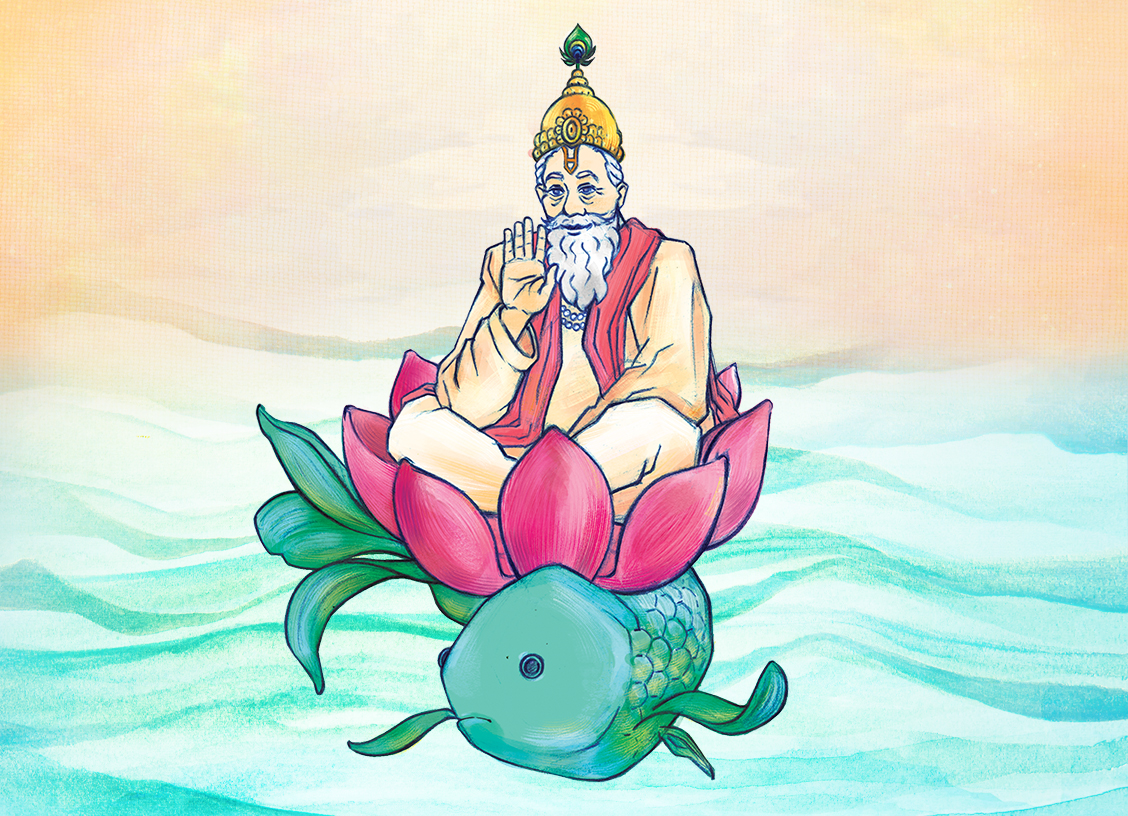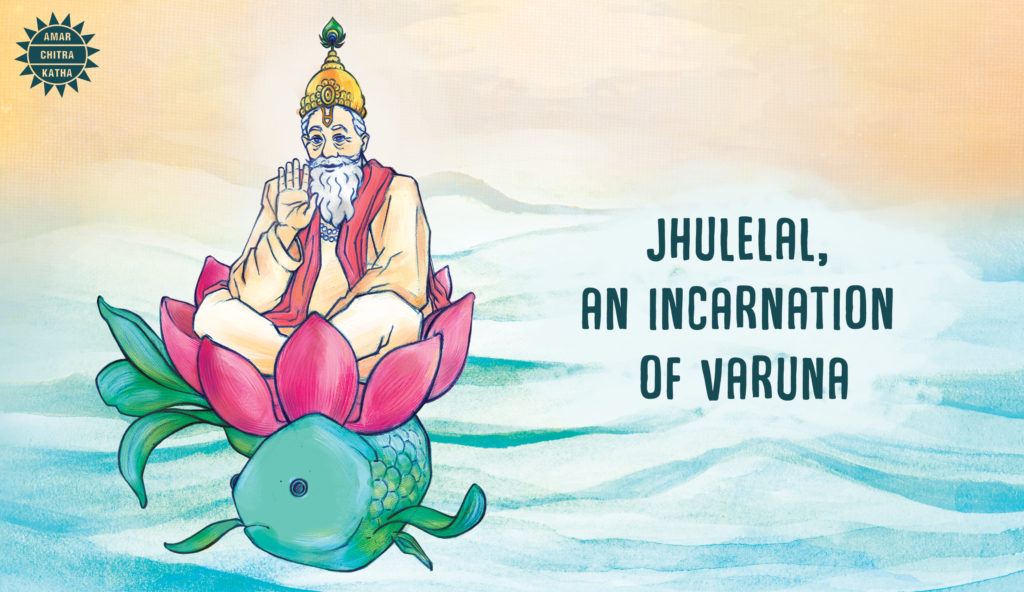Jhulelal: An Incarnation of Varuna
- February 28, 2024


Jhulelal: An Incarnation of Varuna
- February 28, 2024
By Kayva Gokhale
The Sindhi community worships Varuna in his incarnation as Jhulelal, also known as Uderolal or Zinda Pir. He is their patron saint, associated with rivers, water and marine life and is therefore also depicted as being seated on the Pala fish. Jhulelal is celebrated during the Sindhi festival of Cheti Chand, which usually falls in March or April.
The story of Jhulelal is a fascinating tale which ultimately talks of communal harmony. It is believed that in 10th century C.E., a tyrannical Turkish ruler known as Mirk Shah or Makrab Khan was reigning the province of Thatta, in present day Sindh, Pakistan. He started to force Hindus in the region to convert to Islam. The people then prayed to their lifeline, the River Indus. They fasted and appealed to the river for forty days, after which a voice emerged from the river. The voice told the people that Varuna would be born among them and become their saviour.
To receive more such stories in your Inbox & WhatsApp, Please share your Email and Mobile number.

Soon, a couple – Ratanchand and Devaki Lohana – had a child they named Uderolal (The One Who Came from the Waters). A number of miracles took place during the boy’s childhood, which convinced his parents and the community that he was extraordinary. When he was but a baby, his parents looked in his open mouth and saw the mighty Indus. Similarly, it is said that his cradle would rock itself and put him to sleep. Thus, he began to be called Jhulelal or ‘Lord of the Swing’.
As news of this miraculous child reached Mirk Shah, he sent his soldiers to take the child captive. When the soldiers reached, Jhulelal transformed from a child to an old saintly man with a white beard, within a matter of seconds. Soon, Jhulelal and Mirk Shah came face to face. The saint preached a message of unity and harmony to the king. He is believed to have said, “He whom you call Allah, and my people call Krishna, are but one and the same!”
Mirk Shah, however, was bent on putting an end to Jhulelal. During his trial, it is said that the court flooded with water as the roof suddenly caught fire. Awed and terrified by this spectacle, Mirk Shah was reformed and begged for mercy. Immediately, the water receded and the fire extinguished and Jhulelal is said to have been swallowed by the earth.
After this incident, the Hindus built a temple to mark the holy spot, while the Muslims built a dargah right next to it. This rare phenomenon symbolises everything that Jhulelal preached to the people, namely unity, communal harmony and love for all.
Read more about the Vedic deities, in the title ‘Devas’ on the ACK Comics app, or order a copy from our website today!
To receive more such stories in your Inbox & WhatsApp, Please share your Email and Mobile number.

Comic of The Month
The Naval Journey of India Book I
This book is the first of a three-book series that takes a deep and detailed look at India's Naval History and a deep insight into the lives of our men and women in white. But any series on the Indian Navy has to start at the very beginning - exploring India's celebrated maritime history. Join our little hero, Bharat, and his grandfather, Commodore Sagar, as they sail into the deep blue waters of time. Book I of The Naval Journey of India takes a sweeping look at India's maritime endeavours, how the seas impacted us over millennia and how the oceans made us who we are.